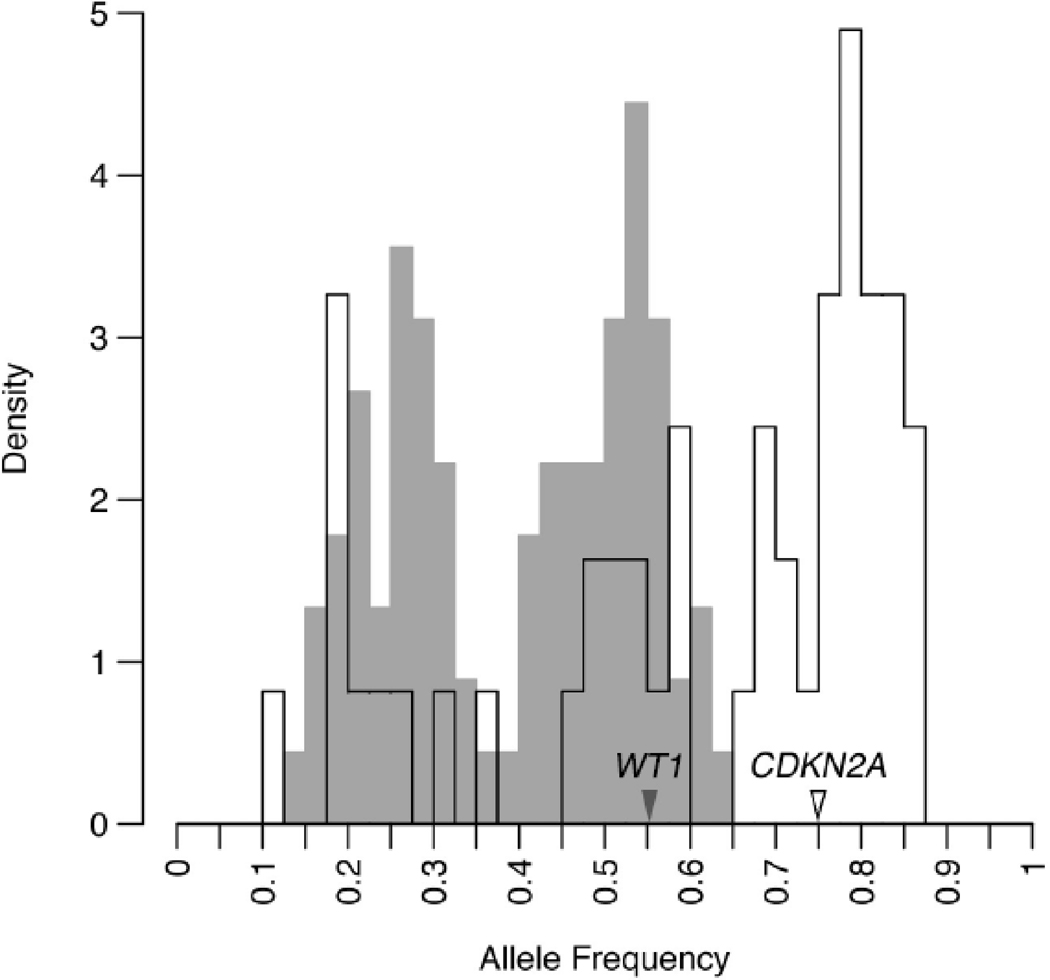Figure 3.
For two regional chromosomal aberrations, mutant allele frequencies reveal distinct evolutionary histories. On chromosome 11, two peaks in mutation frequency are seen, one for heterozygous and one for homozygous mutations, reflect a simple regional gain, including for a COSMIC mutation in WT1. In contrast, three separate frequencies are detected on chromosome 9, culminating in a triploid state for mutant CDKN2A and loss of all wild-type copies. Three discrete allele frequencies can only be achieved by two gains and one loss, with the highest frequency (triploid) peak representing the first gain, and the diploid peak containing mutations from the interval preceding the second gain. The disproportionate size of the triploid peak (p < 0.03) indicates that the first gain occurred more than halfway through in tumor evolution, as measured by the evolutionary clock, and the second gain even later (see Supplementary Methods and Appendix for more detail).

